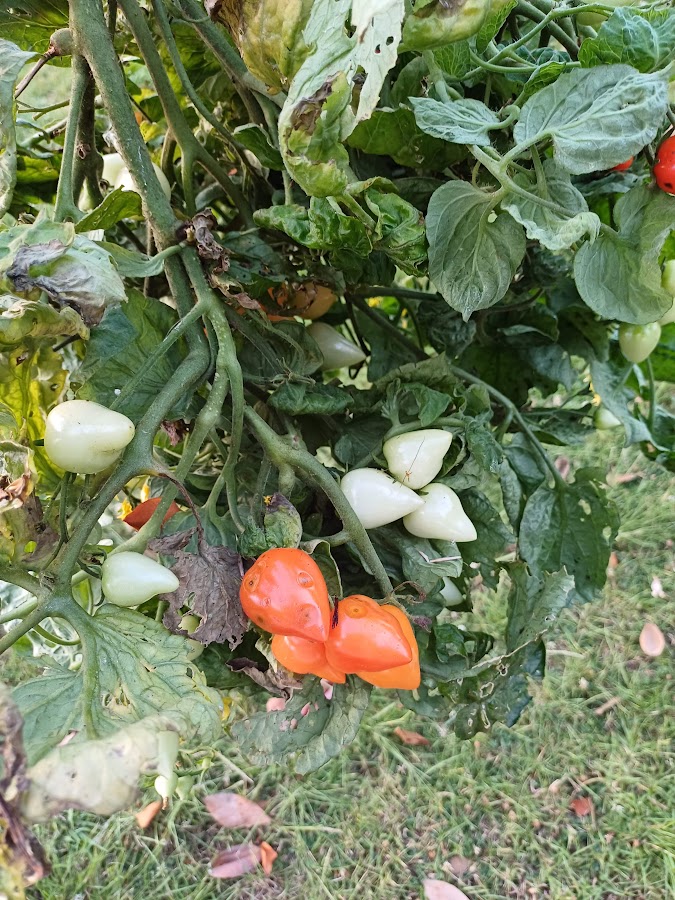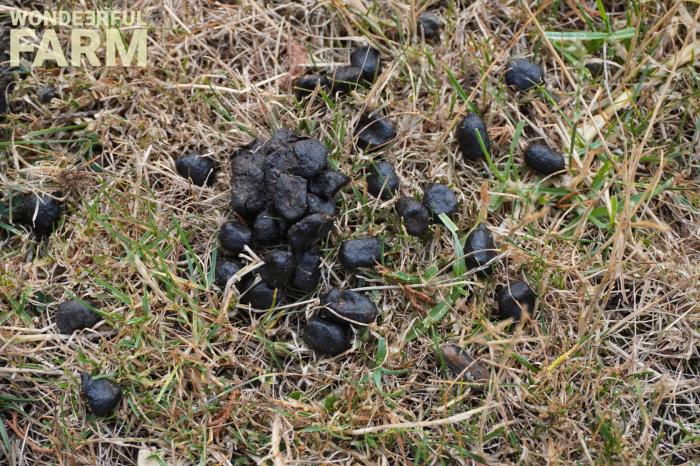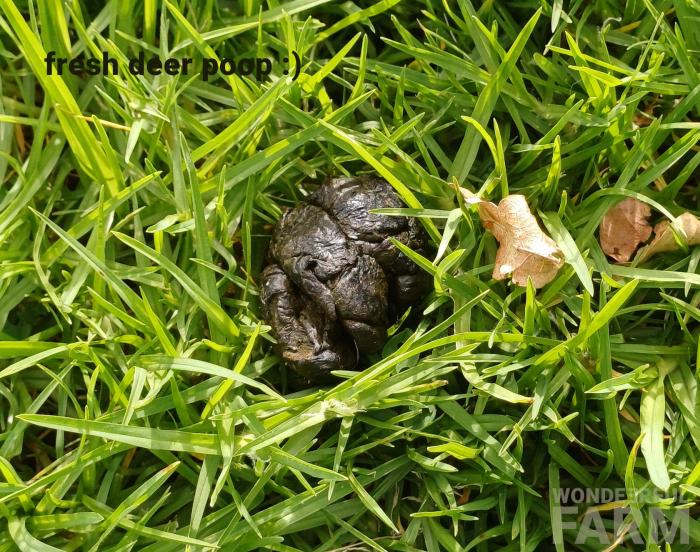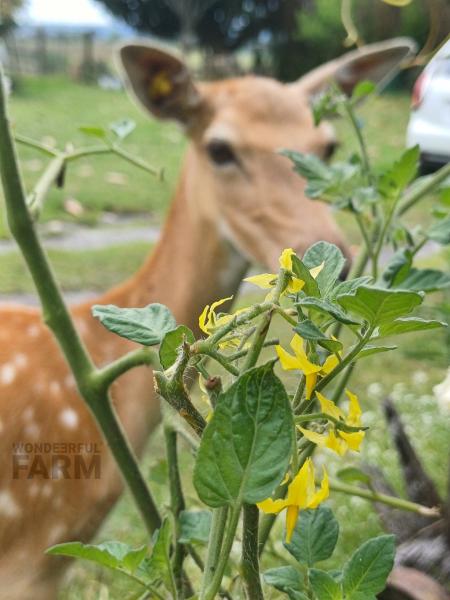Do Deer Eat Tomatoes? Insights from Deer Farmers
» Deer stories » Deer resistant plants » Do Deer Eat Tomatoes? Insights from Deer FarmersPlant type: perennials
Deer resistant: no
Our plant hardiness zone:
New Zealand: subtropical
U.S. Zone 10b
While deer sightings bring joy, the mood sours when they feast on our beloved tomato plants! Picture this: after months of nurturing your garden gems, the heartbreak of discovering them devoured by a ravenous deer just before harvest. Frustration at its peak, right? In this post, we'll be talking deer feeding behavior, exploring whether tomatoes are a delicacy in their herbivorous menu. Furthermore, we'll share our knowledge gained from daily observations of our fallow deer herd, providing invaluable insights to safeguard your precious tomato plants from these graceful yet voracious visitors.
Do Deer Savor the Flavor of Tomatoes and Tomato Plants?
The short answer: yes, deer can and most probably will eat tomatoes and the lush greenery of the tomato plants! Here's a short video of our very own deer devouring our freshly pulled out Sweet Valentine tomato bush.
BTW, this variety has been thoroughly disappoining. Both bushes grown in two different locations, one in pot another in the ground, produced juiceless meaty fruits with dark spots that quickly turned rotten. Their neighbors of other varieties gave delicious harvest.

So that's why I've pulled out the specimen (on the picture above) and donated it to our deer.
Anyway, sorry to be the bearer of bad news, but deer do seem to love nearly every item on the vegetable and fruit roster. The silver lining, however, lies in tomatoes not being their first culinary choice. So you might take solace in the hope that they'll devour your blueberries, strawberries or sweet corn first. Then they'll come for those tomatoes.
A few deer come near our house daily. And there are a couple of tomato plants within their reach as a test. One determinate, bush tomato (yellow), one indeterminate kind (cherry red). From our observations, deer first and foremost go for the ripe tomato fruits of any kind. The foliage, flowers and green fruits are left alone, at least while there's plenty of more interesting options they can take.
Are Tomato Plants Good or Bad for Deer?
While tomato plants don't scream toxicity, their leaves and stems do contain alkaloids such as solanine and tomatine, which can be troublesome in large quantities. Fear not, for ripe tomatoes boast low levels of these compounds, posing minimal health risks to our four-legged friends/pests. It's your tomato salad that's under a threat, not the deer's digestive tract. On the other hand, if you're thinking of feeding wild deer, don't offer them lots in one go as they do need to adapt to new foods gradually.
Detecting Deer Feasting Signs on Your Tomatoes
Deer, as the towering titans of the garden, leave unmistakable traces of their dining escapades. So to identify deer damage keep an eye out for:
- Prominent, rugged bite marks (courtesy of their incisors on the lower jaw)
- Damage higher up on the plant (attributed to their lofty stature)
- Plants uprooted due to their relentless pulling and tearing (small animals like squirrels or moles can't pull out a big tomato plant from the ground)
- Adjacent plants trampled in their feeding frenzy (deer are heavy animals and they don't look where they're stepping)
- Garden decor 'embellished' with hoof prints (visible if the soil is damp or soft)
- Some free garden fertilizer (deer poop, they poop frequently! watch for the droppings that look like this:)


Deer's Gastronomic Preferences
Deer, with their herbivorous inclination, graze on a diverse buffet of trees, grasses, crops, vegetation, acorns, and nuts. We've previously covered extensively the question of what deer eat. With a daily appetite reaching up to 12 lbs of food, some of their top picks include, among others:
- acorns,
- aspen,
- berry bushes,
- corn,
- goldenrod,
- honeysuckle,
- maple,
- poplar,
- sumac.
Strategies to Shield Your Tomatoes from Deer
Here are some strategies to keep them from relishing your tomatoes and more.
Deer – with their super-smelling powers, bulging muscles, and acrobatic high jumps have earned a reputation as the garden's raiders.
To foil their grand plans, the gold standard is a solid 8 feet (2-meter) fence – the Fort Knox of garden defenses. Can't beat that, if it - sometimes, rarely - won't stop the deer, it will apparently catch you some free venison:
But hey, if you're not in the mood to construct a mini fortress, fear not! There's a bouquet of alternatives to keep these resourceful deer at bay.
Think deer-resistant plants, thick hedges, fancy repellents, high-tech deterrents.
- Easiest things first - trim those tall grasses to keep deer from cosily bedding near your house, and be swift with your harvest – like, ninja swift – to deny them a buffet.
- Even if Bambi hasn't RSVP'd to your garden party yet, be proactive. Start the deterrent dance before they even get a sniff of your veggies.
1. Scare Tactics:
👎 Downsides: Spooked deer can be like psychiatric patients off their meds, causing chaos.
👍 Upshots: Devices like motion-activated sprinklers or funky garden decor can startle them away.
Tip: Beware of deer doing impromptu gymnastics or acrobatics. Apparently, they can't resist a good flip over a fence!
2. Stinky Repellents Tactics:
👎 Downsides: DIY repellents may lose their charm over time, and the stink might not deter persistent deer. 👍 Upshots: Commercial repellents or homemade concoctions with egg and baking powder can make your plants less appetizing.
Tip: Just like cologne, deer can get used to the same scent. Switch up your repellents to keep them on their hooves.
3. Planting Deer-Resistant Varieties:
👍 Upside: Choose plants like hyacinth, nasturtium, or bigleaf hydrangea that deer find less appealing. 🌿 Bonus: Plant pungent herbs like lavender or basil nearby – deer turn up their noses at strong scents.
Tip: Your garden can be a culinary paradise for deer if you strategically place their favorite plants farther from your house.
4. Physical Barriers: Fencing, Hedging, Netting, Oh My!
👎 Downsides: Deer can flex their muscles and outsmart flimsy barriers, like plastic netting.
👍 Upsides: A sturdy 6 to 8 feet fence made of wood, metal, or vinyl is the Fort Knox of deer defense.
These cunning critters can outsmart feeble fences, turning your prized tomatoes into their own snack bar. So while you may still opt for an idea of a mesh net, remember that it's a weaker option and make sure it is at least tight and sturdy, because these determined invaders may try and push their noses through. BTW, if any antlered buck gets tied up in your net - he will most likely freak out and consequences can be hard to predict.
🌿🍅 Thick Greenery Defense for Tomatoes: To discourage tomato-loving deer from sneaking into your garden, consider planting robust and expansive deer-resistant greenery, like lush boxwood hedges or compact needle spruces, surrounding the edges of your tomato haven. By creating a leafy shield, you're playing hide-and-seek with the deer, making it less tempting for them to explore your property when they can't peek inside. Privet, known for its deer-resistant qualities, can serve as a living fence around your tomato patch.
We always recommend you read the whole post on keeping deer away to learn to deter deer with maximum success.
If you're using any other deterrents but physical barriers, whether it's a spray or scaring techniques, keep in mind that deer can catch on to your methods. So, mix things up! Change your tactics often. Use a medley of deterrents simultaneously, keep them guessing, and your garden will be the last place on their fine dining list. Happy gardening, defender of the tomatoes!
🍅BTW, many people think tomatoes are annual vegetable plants, but they're actually perennial fruits. They are grown as annuals because they're killed by frosts in colder climates, and also they tend to produce the most in their first year, so it doesn't pay to keep an older plant going.
Are you growing tomatoes? Which varieties? Do you have a deer problem?
Published 22 January 2024
Add your comment
Plants alphabetically
More «Deer resistant plants» stories
Are Anemones Deer Resistant?
While no plant is entirely deer-proof, blue poppy (De Caen) anemones seem to stand a good chance of surviving and thriving in a garden frequented by deer.
read more...
Do Deer Eat Agastache (Anise Hyssop)?
Is anise hyssop (agastache) plant deer resistant? From midsummer to fall, it blooms with blue to purple flowers that attract bees, butterflies, and hummingbirds.
read more...
Do Deer Eat Basil?
Wondering if deer eat basil? Read about deer dietary habits, learn if basil is deer-resistant, and get tips for growing a deer-resistant herb garden.
read more...
 '
'



